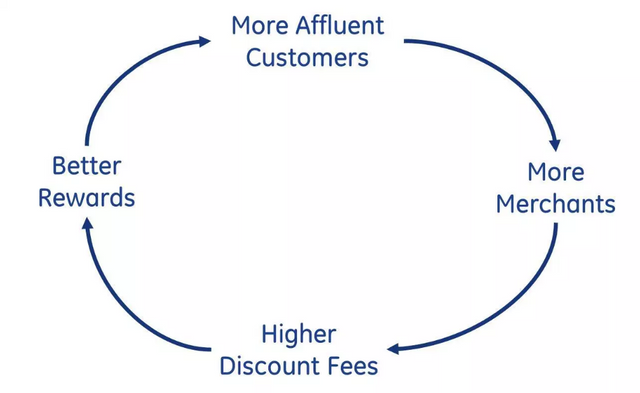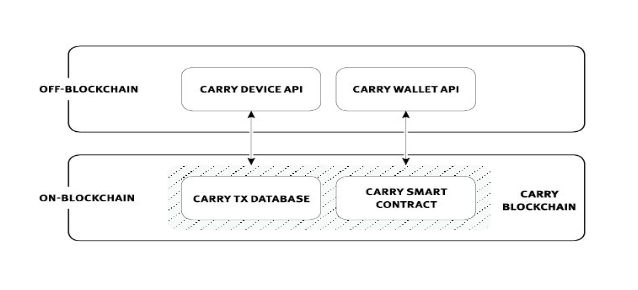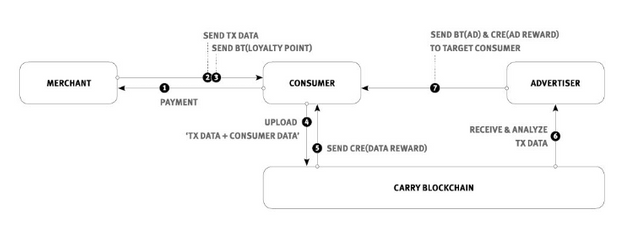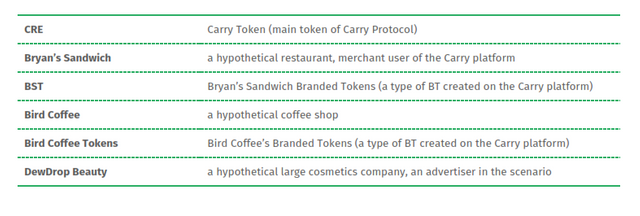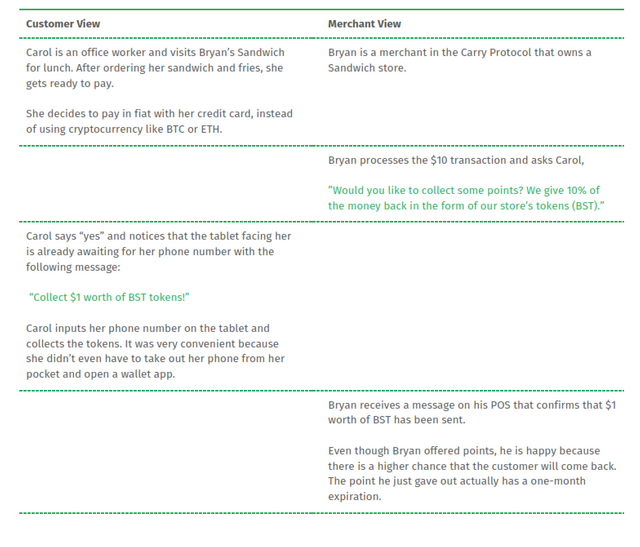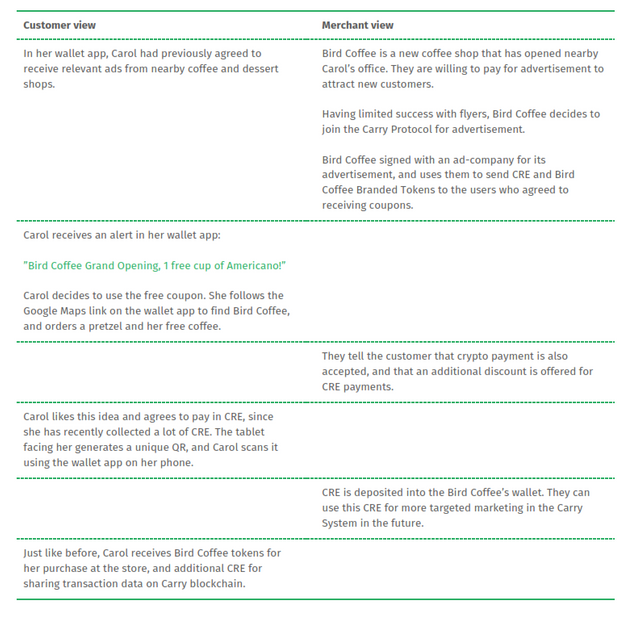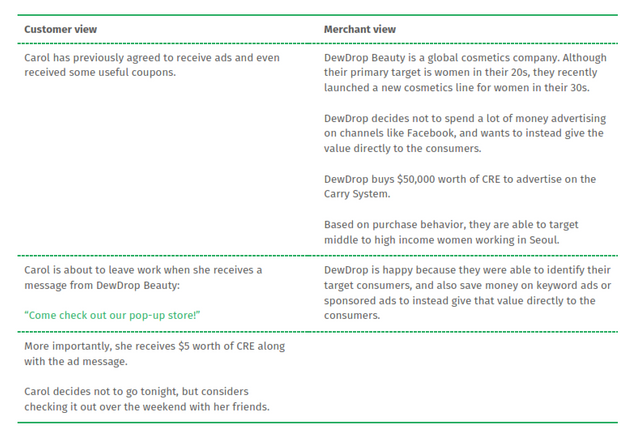Carry Protocol — Understanding the Working and Business Flow
Hello everyone, hope you all are doing well. I welcome you back to another article on carry protocol. Today, we are going to dive into the whitepaper to know the work flow of carry.
I have tried to analyse the working of the carry as per the whitepaper with my limited knowledge, if you would like to understand the working too, do give this article a read. So, without any further ado, let’s begin.
So, In simple terms, Carry is a platform that connects merchants and consumers using blockchain. Simple, right? Let’s dive in deeper.
There are 3 entities in the carry, namely:
Merchants
Consumers
Advertisers(many of whom are expected initially to be merchants in the system. )
Merchants and consumers are the most important participants of the system and use Carry Protocol to communicate and interact in various ways.
Carry Protocol comprises of two major parts, each with two components :
First is the blockchain itself that comprises(On-Blockhain components):
Carry transaction database - refers to the virtual database on the blockchain where the transaction data is generated and uploaded by consumers.
Carry smart contracts - supports the issuance and use of tokens (CRE and BT) on the Carry Protocol.
And the second is a set of APIs that connect the blockchain to third party software(Off-Blockchain components):
Carry wallet API - API enables wallet apps to support Carry Protocol and lets consumers manage their cryptocurrency, control their transaction data & privacy settings.
Carry device API - An API that allows devices at the stores to support Carry Protocol, and provides the function to pay with cryptocurrency and sends payment data to consumer’s wallet. Each of the above will be explained in further detail.
Notice how these of-off blockchain components interact with each other.
Let us now try to understand the Business flow of carry.
Carry Protocol’s service begins when a consumer buys goods or services at a given store and completes a transaction. Carry Protocol supports fiat payments such as credit card and cash, as well as cryptocurrencies, making it easy to use for anyone. Many merchants may be reluctant to accept cryptocurrencies over fiat money, creating the need for a “settlement service provider” to convert the cryptocurrency into fiat money for the merchant.
Anyone can become a settlement service provider in the Carry Protocol, and merchants can work with the settlement service provider of their choice. Merchants can also choose to receive the cryptocurrency directly, in which case they can collect the amount without the help of a settlement service provider. For the time being, most consumers will likely pay in fiat. These transactions undergo the same processes as existing transactions, and therefore does not require any additional action by the merchants.
Merchants must be equipped with an interactive device like a tablet to use Carry Protocol. Most merchants already have a POS (point-of-sales) device, which could itself function as a Carry Protocol device or require a separate device like the tablet. The device will send the transaction data from the POS to the customer, and help the customer upload this data on the blockchain.
Don’t get lost here, just stay with me. Now quickly, let us see a few scenarios to have a better and a clearer understanding of the business flow.
The key definitions used in the scenarios are as follows:
Scenario 1: Fiat Payment and Rewards
This scenario depicts the building up of a customer-merchant relationship, how the customer visits a given merchant, who’s in Carry Protocol and how he successfully makes his customer happy, leading to a potential future business with this customer.
See the tabular representation below to have a better understanding of the series of events which takes place.
Scenario 2: Targeted Coupons and Crypto payments
Since the customer(s) had previously agreed to receive relevent ads on the carry network, they receive the promotional offers/advertisements from the advertisers on the network and get paid for them too. Have a look at the table below to have a better understanding of the aforementioned scenario.
Scenario 3: Targeted Marketing by a third party
Any third party on the carry network can purchase Carry tokens(CRE) to perform targeted advertising on the Carry system. See the series of events below to understand this concept.
This targeted marketing creates an awareness amongst the consumers and inculcates an interest for the said marketed product/service. This aligns perfectly with the consumer buying cycle. (See the image below).

The “funnel” is simply a visual representation of the consumer’s journey through the purchasing process, from prospect to customer and repeat customer.
What does this mean?
In simple terms, this means that the advertisers can reach the potential customers which may be interested in their product/service and may turn into potential profit for the firm. So, what’s in it for the customers? It’s simple, the consumers are able to get the product they need/like and that too for a discounted price and along with it, some loyalty points too. WIN-WIN.!

Some useful terms:
1. Branded Tokens(BT)
The branded tokens can be of 2 types, namely:
Loyalty points- Merchants often provide loyalty points or coupons to customers as a way to encourage return visits. Carry Protocol helps merchants to this end by providing tokens branded for each merchant. The BT is issued by merchants and provided to customers, regardless of whether or not the customer chooses to upload the payment data on the blockchain. The Branded Tokens act as a receivable issued to the consumer by the merchant, and thereby imposes an obligation on the merchant to provide goods, services, or other benefits accordingly. BTs have a number of other properties and uses, which we will be detailed later.
Advertisement- Advertisements are sent in the form of BT on the Carry Protocol. Based on its property, the BT could be a coupon to be used on the next visit or a simple ad display. On the receiving end, consumers see the ad on their wallet app in the form of BT. Consumers can choose whether or not they want to receive ads by configuring the setting, and even choose specific areas of interest for ads (F&B, cosmetics, etc.). Consumers that opt to receive ads will also receive CRE on top of the BT as a reward for ad exposure. Consumers can set the minimum threshold for the level of CRE rewards, so that BT (ads) is only sent when a certain number of CRE has been received as a mechanism to protect themselves from indiscriminate ads or spam.
Consumers are rewarded CRE by the advertiser for opting to receive ads, which is an incentive that has been proven to be effective through a number of reward apps. From the advertiser’s point of view, the cost of advertising has been minimized and instead given directly to consumers for a more effective form of advertising at a lower cost.
2. Transaction Data Monetization
After completing the transaction at the store, consumers will receive the transaction data on their wallet app. There are multiple ways of receiving transaction data: one example is by entering their phone number on the device or by scanning the QR code from the device using the wallet app.
The consumer can then decide whether or not they want to upload the transaction data on the blockchain. Carry Protocol gives full authority of the data to the consumers to realize its mission of “consumer data ownership.” Even when the consumer chooses to upload the transaction data, whether in part or in whole, their privacy will be protected through anonymity shield and data encryption. Carry Protocol gives consumers CRE as a reward for uploading their transaction data on the blockchain, thereby encouraging more uploads. The CRE given to consumers will be taken from the Carry Token Pool built from the inflation of the blockchain itself.
So, with this, i conclude my article. Hope you got in an insight of the working and business flow of Carry Protocol. See you soon with some other great article, good luck till then.
Adios amigos.!
For more information about the ICO, you can visit the following links:
Website: https://carryprotocol.io/
Whitepaper: https://carryprotocol.io/static/docs/Carry_protocol-white_paper%28ENG%29.pdf
Blog: https://medium.com/@carryprotocol
Telegram: https://t.me/carryprotocol
- The information contained in this article is for education purpose only and not financial advice. Do your own research before making any investment decisions.

